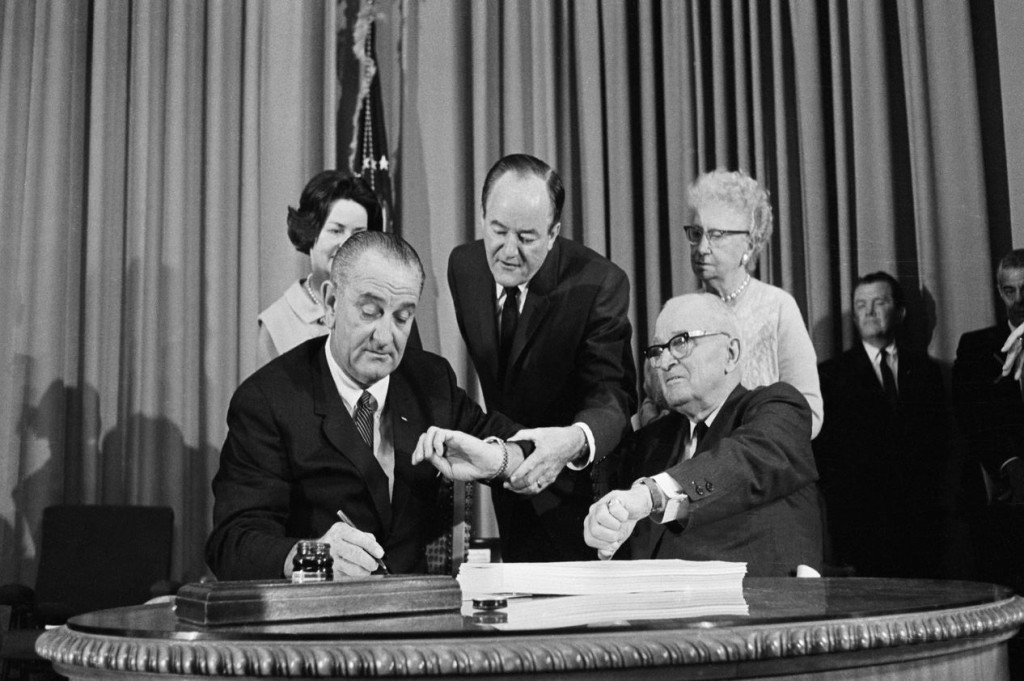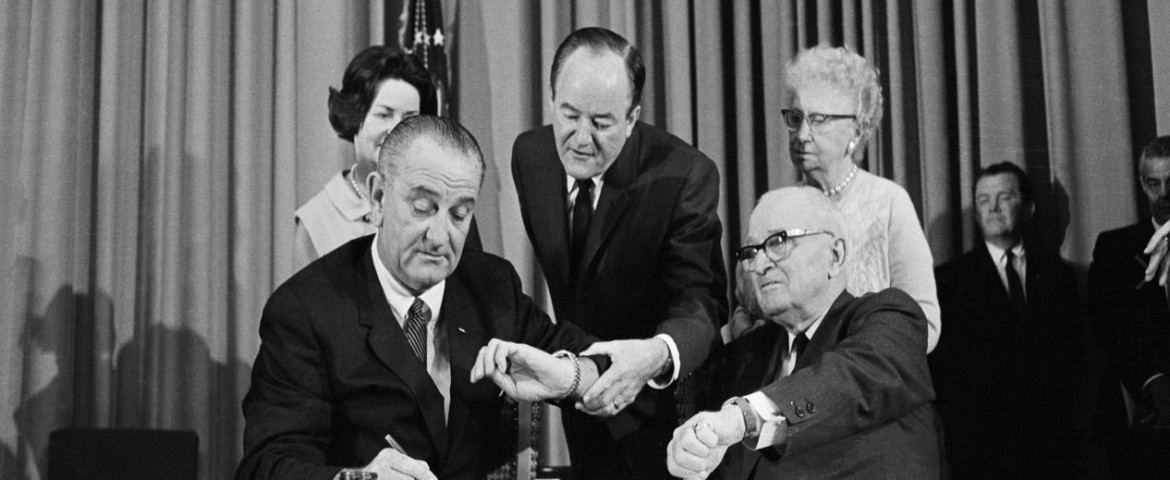It was also the year that President Lyndon B. Johnson signed the Medicare bill, offering older Americans health insurance coverage.
50 years later, there are nearly 55 million individuals receiving health coverage through a Medicare program. Retirees have greater peace of mind and in many cases, healthier lives, as a result of the Medicare coverage available to them.
Medicare has come a long way but let’s not forget where it started. Not so long ago, the world of health care painted a much different picture for older Americans.
Coverage was either unavailable or unaffordable.
As Americans aged, illness and injury became a major financial burden on their families. Prior to Medicare, only 65 percent of people ages 65 and over had health insurance. The rest – had uncertainty.
Recognizing a need for change, several presidents, including Theodore Roosevelt and Harry S. Truman, made efforts to create a federal health insurance program, but were unsuccessful.
Finally, on July 30, 1965, President Lyndon B. Johnson signed a bill that established the first federal health insurance coverage program for the elderly. Medicare was born.
“There are those fearing the terrible darkness of despairing poverty—despite their long years of labor and expectation—who will now look up to see the light of hope and realization,” Johnson said during the bill signing ceremony.

When coverage officially took effect in 1966, one million people signed up within the first week. By the end of the year, Medicare Part A had enrolled 19 million people, a number that would continue to grow each year.
Future presidents would continue to build on Johnson’s vision of a Medicare system, broadening the limits of health coverage. In 2006, George W. Bush implemented a Medicare prescription drug plan.
24 fun facts about Medicare history
- President Lyndon B. Johnson signed in the Medicare bill, a federal health insurance program for the elderly, on July 30, 1965.
- It wasn’t just Medicare though, the bill also included Medicaid, a state and federally funded program offering health coverage to low-income individuals.
- The idea of a national health insurance system for Americans was first proposed by President Theodore Roosevelt, when he ran for president in 1912.
- President Harry S. Truman, who is credited as the first president who actually made a concerted effort for government-led health care, became the first person to enroll in Medicare.
- Truman’s wife, Bess, was the second person to enroll.
- For the first Medicare enrollees, beneficiaries had an annual deductible of $40 for Part A, and paid monthly premium for Part B was $3.
- In its first year, 19 million individuals took advantage of the new Medicare health coverage benefits.
- Andy Slavitt is acting administrator for CMS. He started this role in February of 2015.
- In 1972, President Nixon expanded Medicare coverage to individuals younger than 65 with end-stage renal disease and to those with long-term disabilities.
- The program played a key role in desegregation of hospitals across the United States. In order to receive the reimbursements for treating Medicare patients, hospitals were required to desegregate. Needless to say, that was a strong incentive, more than 1,000 hospitals complied within the first four months of the program.
- Medicare does not pay for all health care costs. Beneficiaries pay premiums for coverage and co-payments for most services.
- Congress passed the Omnibus Reconciliation Act of 1980; the bill brought Medigap under federal oversight.
- In 1982, Hospice became a Medicare benefit.
- In 1997, other legislation provided those eligible for Medicare coverage with more options on the private market through the inclusion of Medicare Part C, or otherwise known as Medicare Advantage.
- Medicare coverage was extended to people with Lou Gehrig’s disease in 2001.
- In 2006, people eligible for both Medicare and Medicaid began to receive drug coverage under Medicare.
- The number of Medicare enrollees is projected to rise from 47 million to 78 million between 2010 and 2030.
- In the 85 and over group in Medicare, there are 45 men per 100 women.
- Today, nearly 54 million Americans, or 15 percent of the nation’s population, depend on Medicare for health insurance coverage.
- 86.7 million –the projected number of individuals who will be 65 plus in the year 2050.
- Medicare Advantage = Medicare Plan C —They’re the same and the abbreviation is MA.
- In 2010, the Affordable Care Act mandates that Medicare beneficiaries receive certain preventive care services and health screenings, free of charge. The ACA also reduces the out of pocket expenses of Part D enrollees.
- In 2013, almost all (93 percent) non-institutionalized persons 65+ were covered by Medicare.
- Average out-of-pocket costs and costs covered by private insurance decreased after the introduction of the Medicare Part D prescription drug program in 2006.


